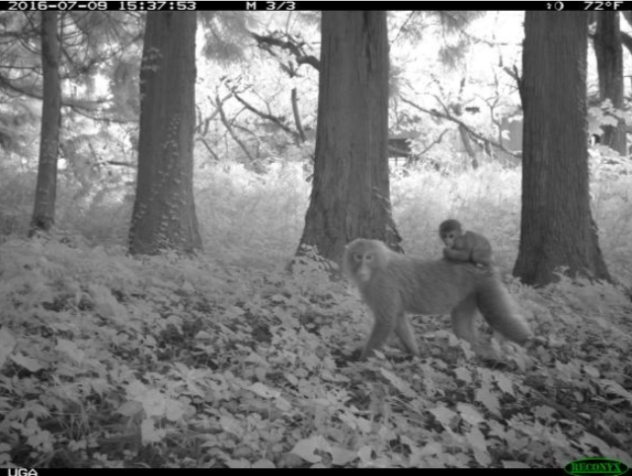
©University of Georgia
Pre-reading questions:
I will read each question. Then, please answer them.
- What animal best represents your character? Please explain.
- What particular animals have become famous in your country for some special skill or accomplishment?
Vocabulary:
I will read the words, meanings, and sample sentences. Then, repeat after me.
- abandoned /uh-BAN-duhnd/
- calamity /kuh-LAM-i-tee/
- discharge /dis-CHAHRJ/
- substantial /suhb-STAN-shuhl/
- species /SPEE-sheez/
[adjective] – left in a particular place or condition, usually forever
The abandoned building is said to be haunted.
[noun] – a serious accident or bad event causing damage or suffering
That earthquake was the worst calamity in the country’s history.
[verb] – to send out a substance, especially waste liquid or gas
Harmful chemicals from the factory were illegally discharged into the river,
[adjective] – large in size, value, or importance
Mr. Lopez made substantial donations to the charity.
[noun] – a set of animals or plants in which the members have similar characteristics to each other and can breed with each other
This bird species is decreasing in numbers every year.
Article reading:
Please read the whole article. Then, I will check your pronunciation and intonation.
Ten years following Japan’s Fukushima nuclear disaster, a developing wildlife population has been discovered by researchers in abandoned areas despite the radiological contamination. On March 11, 2011, the country was hit by a 9.0 magnitude earthquake, leaving more than 20,000 deaths or missing bodies and hundreds of thousands of destroyed properties. During the calamity, three devices at the Fukushima Daiichi nuclear plant were damaged, discharging radioactive substances into the air. More than 100,000 people were forced to evacuate from the area.
University of Georgia (UGA) researchers have observed that wildlife is substantial in human-free areas in spite of the contamination. In a period of 120 days, they collected more than 267,000 photos of more than 20 species using 106 remote cameras. These include raccoon dogs, wild boars, macaques, pheasants, foxes, and Japanese hares in the areas near the power plant. “Our results represent the first evidence that numerous species of wildlife are now abundant throughout the Fukushima Evacuation Zone, despite the presence of radiological contamination,” James Beasley, associate professor at the Savannah River Ecology Laboratory and the Warnell School of Forestry and Natural Resources, said in a statement. Meanwhile, scientists noted that this study only monitors the radiological impact on wildlife populations as a whole and not individually.
University of Georgia (UGA) researchers have observed that wildlife is substantial in human-free areas in spite of the contamination. In a period of 120 days, they collected more than 267,000 photos of more than 20 species using 106 remote cameras. These include raccoon dogs, wild boars, macaques, pheasants, foxes, and Japanese hares in the areas near the power plant. “Our results represent the first evidence that numerous species of wildlife are now abundant throughout the Fukushima Evacuation Zone, despite the presence of radiological contamination,” James Beasley, associate professor at the Savannah River Ecology Laboratory and the Warnell School of Forestry and Natural Resources, said in a statement. Meanwhile, scientists noted that this study only monitors the radiological impact on wildlife populations as a whole and not individually.
Comprehension questions
I will read each question. Then, please answer them based on the article.
- When did a 9.0 magnitude earthquake hit Japan?
- In what site was the destroyed power plant located?
- How did the UGA researches capture the photos of more than 20 species of animals?
- Please name at least three (3) species mentioned in the article.
- What did the scientists clarify about the study, according to the article?
Discussion questions
I will read each question. Then, please answer them.
- Have you seen a wild animal? If yes, kindly share your experience. If not, please name one animal that you would like to see in person someday.
- What kind of environmental policies does your country have?
- Would you join an animal rights group? Why or why not?
- Are you environmentally friendly?
- What can we do to make sure animals’ rights are respected?